#Singapore Landscape Design
Explore tagged Tumblr posts
Text
#singapore landscape#landscape design#landscape design singapore#singapore#balcony garden#singapore landscape design#landscape#garden design#gardening#landscape architecture
3 notes
·
View notes
Text
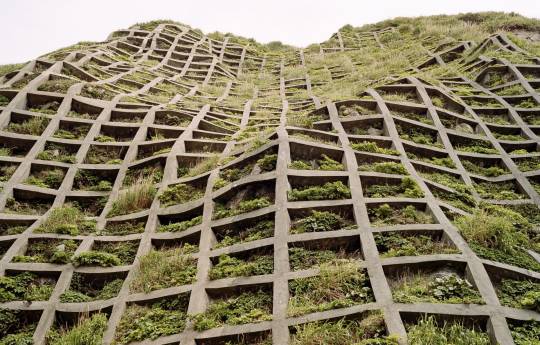
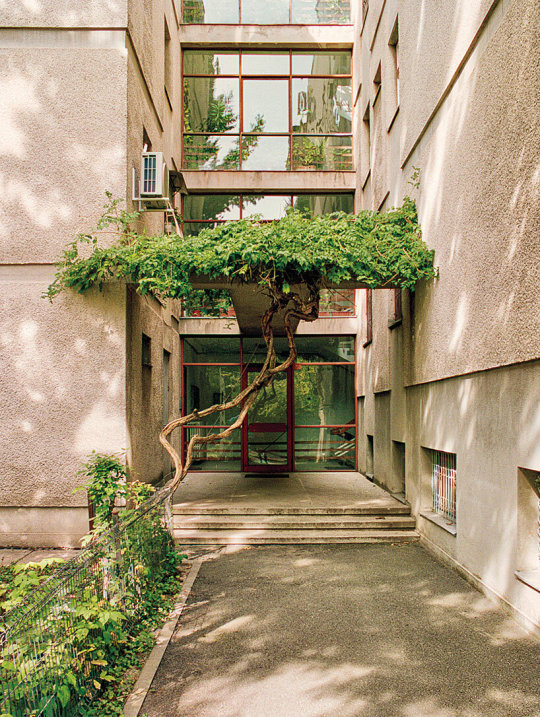


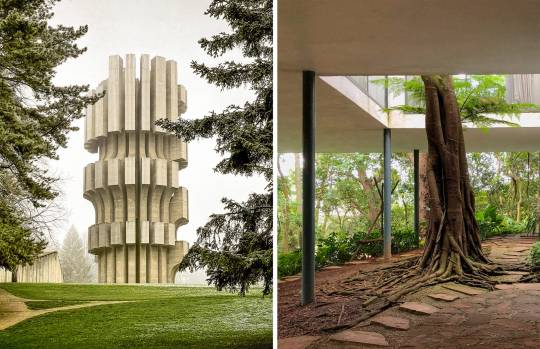

"Brutalist Plants"
Reinforced hillside, Aogashima, Tokyo, Japan. Photo © Yasushi Okano,
Bucharest, Romania. Photo © Bogdan Anghel,
Casa Alférez, Cañada De Alferes, Mexico. Architect Ludwig Godefroy. Photo © Rory Gardiner,
Monumento a Azeredo Perdigão by Pedro Cabrita Reis,
Casa de Vidro, São Paulo, Brazil. Architect Lina Bo Bardi. Photo © Celeste Asfour,
Artwork and photo by Karsten Födinger in La Vallée, Basse-Normandie, France,
Jurong Bird Park, Jurong, Singapore. Architect John Yealland and J. Toovey. Photo © James Wong
Courtesy: Olivia Broome (Hoxton Mini Press)
#art#design#architecture#photography#nature#green#brutalism#plants#olivia broome#iconic#building#installation#landscaping#tokyo#japan#aogashima#romania#mexico#ludwig godefroy#pedro cabrita reis#france#artwork#jurong bird park#singapore#hoxton mini press
4K notes
·
View notes
Text

Fort Canning Tree Tunnel," Singapore,
Fort Canning Tree tunnel connects Penang Road with Fort Canning Park and ends with a spiral staircase looking up to a large Yellow Rain Tree. Fort Canning Park is open 24/7 and there is no entrance fee for visiting it.
Fort Canning was built in 1859 and used by the British Army and then the Japanese Army during the occultation in WWII. It was handed over to the Singapore Armed Forces in 1963 and converted into a public park in 1972.
#art#design#stairwell#stairway#architecture#staircase#spiral staircase#stairs#staircases#public space#crossroad#underground#singapore#tunnel#tree#fort canning#garden#landscape architecture
140 notes
·
View notes
Text
I was given a choice for where to specialise for my internship, there's 3 things that I kinda wanna do
1)Suffer in Government
2)Admin work at a Historical hill where it is said to be the resting place of former Malay Kings of the 1300s
3) LANDSCAPE DESIGN
#college#internships#education#singapore#landscape design#horticulture#government#botany#helping the president in work#the work being Plants#or the possibility of being haunted by the former rulers of the Country
2 notes
·
View notes
Text
Eco-Innovation Alert: How Solar Trees Can Reshape Cities and Power Progress
In the ever-evolving landscape of renewable energy, the concept of “solar trees” is emerging as a fascinating blend of technology and biomimicry, offering a new way to harvest solar energy while harmonizing with the natural world. These innovative structures are reshaping the way we think about solar power generation, with their design inspired by the elegance and efficiency of trees in nature.…

View On WordPress
#artificial photosynthesis#biomimicry#clean energy#eco-friendly#EVs#green technology#renewable#Singapore#solar#solar charger#solar trees#sustainability#sustainable design#urban landscaping#urban planning
6 notes
·
View notes
Text
Many of the LUX homes being built in Singapore all seem very similar to this style.
#Wallflower Architecture + Design#Singapore#Tropical landscape#Tropical Plants#courtyard garden#indoor garden#indoor plants#Natural lighting
0 notes
Text
What it meant to "do geology" in Hutton's time was to apply lessons of textual hermeneutics usually reserved for scripture [...] to the landscape. Geology was itself textual. Rocks were marks made by invisible processes that could be deciphered. Doing geology was a kind of reading, then, which existed in a dialectical relationship with writing. In The Theory of the Earth from 1788, Hutton wrote a new history of the earth as a [...] system [...]. Only a few kilometers away from Hutton’s unconformity [the geological site at Isle of Arran in Scotland that inspired his writing], [...] stands the remains of the Shell bitumen refinery [closed since 1986] as it sinks into the Atlantic Ocean. [...] As Hutton thought, being in a place is a hermeneutic practice. [...] [T]he Shell refinery at Ardrossan is a ruin of that machine, one whose great material derangements have defined the world since Hutton. [...]
The Shell Transport and Trading Company [now the well-known global oil company] was created in the Netherlands East Indies in 1897. The company’s first oil wells and refineries were in east Borneo [...]. The oil was taken by puncturing wells into subterranean deposits of a Bornean or Sumatran landscape, and then transported into an ever-expanding global network of oil depots at ports [...] at Singapore, then Chennai, and through the Suez Canal and into the Mediterranean. [...] The oil in these networks were Bornean and Sumatran landscapes on the move. Combustion engines burnt those landscapes. Machinery was lubricated by them. They illuminated the night as candlelight. [...] The Dutch East Indies was the new land of untapped promise in that multi-polar world of capitalist competition. British and Dutch colonial prospectors scoured the forests, rivers, and coasts of Borneo [...]. Marcus Samuel, the British founder of the Shell Transport and Trading Company, as his biographer [...] put it, was “mesmerized by oil, and by the vision of commanding oil all along the line from production to distribution, from the bowels of the earth to the laps of the Orient.” [...]
---
Shell emerged from a Victorian era fascination with shells.
In the 1830s, Marcus Samuel Sr. created a seashell import business in Houndsditch, London. The shells were used for decorating the covers of curio boxes. Sometimes, the boxes also contained miniature sculptures, also made from shells, of food and foliage, hybridizing oceanic and terrestrial life forms. Wealthy shell enthusiasts would sometimes apply shells to grottos attached to their houses. As British merchant vessels expanded into east Asia after the dissolution of the East India Company’s monopoly on trade in 1833, and the establishment of ports at Singapore and Hong Kong in 1824 and 1842, the import of exotic shells expanded.
Seashells from east Asia represented the oceanic expanse of British imperialism and a way to bring distant places near, not only the horizontal networks of the empire but also its oceanic depths.
---
The fashion for shells was also about telling new histories. The presence of shells, the pecten, or scallop, was a familiar bivalve icon in cultures on the northern edge of the Mediterranean. Aphrodite, for example, was said to have emerged from a scallop shell. Minerva was associated with scallops. Niches in public buildings and fountains in the Roman empire often contained scallop motifs. St. James, the patron saint of Spain, was represented by a scallop shell [...]. The pecten motif circulated throughout medieval European coats of arms, even in Britain. In 1898, when the Gallery of Palaeontology, Comparative Anatomy, and Anthropology was opened in Paris’s Museum of Natural History - only two years after the first test well was drilled in Borneo at the Black Spot - the building’s architect, Ferdinand Dutert, ornamented the entrance with pecten shell reliefs. In effect, Dutert designed the building so that one entered through scallop shells and into the galleries where George Cuvier’s vision of the evolution of life forms was displayed [...]. But it was also a symbol for the transition between an aquatic form of life and terrestrial animals. Perhaps it is apposite that the scallop is structured by a hinge which allows its two valves to rotate. [...] Pectens also thrive in the between space of shallow coastal waters that connects land with the depths of the ocean. [...] They flourish in architectural imagery, in the mind, and as the logo of one of the largest ever fossil fuel companies. [...]
---
In the 1890s, Marcus Samuel Jr. transitioned from his father’s business selling imported seashells to petroleum.
When he adopted the name Shell Transport and Trading Company in 1897, Samuel would likely have known that the natural history of bivalves was entwined with the natural history of fossil fuels. Bivalves underwent an impressive period of diversification in the Carboniferous period, a period that was first named by William Conybeare and William Phillips in 1822 to identify coal bearing strata. In other words, the same period in earth’s history that produced the Black Spot that Samuel’s engineers were seeking to extract from Dayak land was also the period that produced the pecten shells that he named his company after. Even the black fossilized leaves that miners regularly encountered in coal seams sometimes contained fossilized bivalve shells.
The Shell logo was a materialized cosmology, or [...] a cosmogram.
Cosmograms are objects that attempt to represent the order of the cosmos; they are snapshots of what is. The pecten’s effectiveness as a cosmogram was its pivot, to hinge, between spaces and times: it brought the deep history of the earth into the present; the Black Spot with Mediterranean imaginaries of the bivalve; the subterranean space of liquid oil with the surface. The history of the earth was made legible as an energetic, even a pyrotechnical force. The pecten represented fire, illumination, and certainly, power. [...] If coal required tunnelling, smashing, and breaking the ground, petroleum was piped liquid that streamed through a drilled hole. [...] In 1899, Samuel presented a paper to the Society of Arts in which he outlined his vision of “liquid fuel.” [...] Ardrossan is a ruin of that fantasy of a free flowing fossil fuel world. [...] At Ardrossan, that liquid cosmology is disintegrating.
---
All text above by: Adam Bobbette. "Shells and Shell". e-flux Architecture (Accumulation series). November 2023. At: e-flux dot com slash architecture/accumulation/553455/shells-and-shell/ [Bold emphasis and some paragraph breaks/contractions added by me. Presented here for commentary, teaching, criticisms purposes.]
90 notes
·
View notes
Text
The Synagogue of Singapore: A Historical Overview
As someone with a rich Jewish heritage, the history of the Maghain Aboth Synagogue in Singapore holds a special place in my heart. This synagogue represents not only the perseverance and unity of the Jewish community but also my personal connection to a legacy that has endured for generations. It's a beacon of faith, culture, and history that resonates deeply with my sense of identity and belonging.
The Maghain Aboth Synagogue, located in Singapore, is the oldest Jewish synagogue in Southeast Asia. Established in 1878 by the Jewish community, primarily comprised of Sephardic Jews from Baghdad, it has served as a central place of worship and community for over a century.
The Jewish presence in Singapore dates back to the early 19th century, with traders and merchants arriving from regions such as India, Iraq, and Persia. As the community grew, the need for a dedicated place of worship became evident. The Maghain Aboth Synagogue was constructed on Waterloo Street, designed in a neoclassical style that blends with Singapore's diverse architectural landscape.
Over the years, the synagogue has witnessed significant events, including World War II, when it served as a refuge and community center during the Japanese occupation. Despite the challenges, it remained a steadfast symbol of the Jewish faith and resilience in Singapore.
In the 20th century, the synagogue underwent renovations to preserve its structure and accommodate the growing community. It continues to serve as the focal point for Jewish religious life in Singapore, hosting services, festivals, and cultural events.
Today, the Maghain Aboth Synagogue stands as a testament to the enduring legacy and contributions of the Jewish community in Singapore. It not only represents a place of worship but also a historical landmark reflecting the multicultural tapestry of the city-state.
Axel Laniez

#synagogue#singaporesynagogue#jewish#jewish history#judaism#beauty#tolerance#heritage#singapore#southeast asia#travel#asia#Southeast Asia#sea
26 notes
·
View notes
Text

















Thai Style
Luca Invernizzi Tettoni - William Warren
Times Editions, Singapore rev.ed.1993, 231 pages, 25,5x25,5cm, ISBN 981-204-462-0
euro 28,00
email if you want to buy [email protected]
That special style that defines a culture is born of many elements. Thai style, so vividly revealed in its architecture and interiors, is the product of a distinctive landscape, a skillful use of varied influences, and a history unique among the peoples of Southeast Asia. It is a style that can be found in rustic country homes or chic Bangkok residences elegantly furnished with antiques and family heirlooms. It may be reflected in a number of unique and historic houses which preserve the best of the past, in unmistakably contemporary interiors where old and new sit comfortably side by side, in traditional structures revamped for modern living, and in lush tropical garden settings and seaside resorts. The over 370 color photographs by Luca Invernizzi Tettoni present a luminous vision of this distinctive style. A concise introduction by author William Warren places Thai design in context and adds another dimension to our understanding of Thai culture. It is followed by a photographic essay which isolates elements of Thai style, from traditional objects and art forms to handicrafts and street art. Architecture and interiors are treated in four chapters--Traditions, Traditions Adapted, Foreign Influences and Tropical Modern. Useful measured drawings are featured in the Architectural Notebook, a final section.
20/10/24
#Thai Style#Luca Invernizzi Tettoni#photography books#Bangkok#traditions#traditions adapted#foreign ingluences#tropical modern#designbooksmilano#fashionbooksmilano
17 notes
·
View notes
Text
The current landscape of hyper-local urban farming across Asia
Globally, urban farming is evolving as cities seek innovative solutions to sustainably feed their growing urban populations. Techniques like vertical farming and hydroponics are at the forefront, allowing crops to be grown in layered setups or water-based environments, minimizing land use, and reducing water consumption.
Urban farming in Asia presents a rich tapestry of approaches, each shaped by the unique challenges and priorities of the region’s diverse cultures and economies. The rapid urbanization and dense population clusters in Asia make urban agriculture not just a choice but a necessity, driving innovation and adaptation in several key areas.
China
China has become a leader in urban agriculture through heavy investment in technology and substantial government support. Initiatives like the Nanjing Green Towers, which incorporate plant life into skyscraper designs, exemplify how urban farming can be integrated into the urban landscape.
The government has also implemented policies that encourage the development of urban farming, providing subsidies for technology such as hydroponics and aquaponics, which are vital in areas with contaminated soil or water scarcity.
Japan
With its limited arable land, Japan has turned to creative solutions to maximize space, such as rooftop gardens and sophisticated indoor farming facilities.
One notable example is the Pasona Urban Farm, an office building in Tokyo where employees cultivate over 200 species of fruits, vegetables, and rice used in the building’s cafeterias.
This not only maximizes limited space but also reduces employee stress and improves air quality.
Singapore
Singapore’s approach is highly strategic, with urban farming a crucial component of its national food security strategy. The city-state, known for its limited space, has developed cutting-edge vertical farming methods that are now being adopted globally.
The government supports these innovations through grants and incentives, which has led to the success of vertical farms. These farms use tiered systems to grow vegetables close to residential areas, drastically reducing the need for food transportation and thereby lowering carbon emissions.
India
In contrast to the technology-driven approaches seen in other parts of Asia, India’s urban farming is largely community-driven and focuses on achieving food self-sufficiency.
Projects like the Mumbai Port Trust Garden take unused urban spaces and convert them into flourishing community gardens. These projects are often supported by non-governmental organizations and focus on employing women, thus providing both social and economic benefits.
Thailand
Thailand’s urban farming initiatives often blend traditional agricultural practices with modern techniques to enhance food security in urban areas. In Bangkok, projects like the Chao Phraya Sky Park demonstrate how public spaces can be transformed into productive green areas that encourage community farming. These initiatives are supported by both local municipalities and private sectors, which see urban farming as a way to reduce food import dependency and improve urban ecological balance.
The Philippines
In the Philippines, urban farming is an adaptive response to urban poverty and food insecurity. Metro Manila hosts numerous community garden projects that are often grassroots-driven, with local government units providing support through land and resources. These gardens supply food and serve as educational platforms to teach urban residents about sustainable practices and nutritional awareness.
8 notes
·
View notes
Text

45 is a minimalist space located in Singapore, designed by Spacebar Design. Set within an urban landscape, this walk-up apartment stands as a testament to simplicity and authenticity, diverging from the conventional notion of a meticulously curated home. Occupied by a young couple, the space is an ode to the inherent beauty of its construction materials. Central to the apartment’s design is a structural column, left bare, its paint and plaster removed
18 notes
·
View notes
Text
#singapore#landscape design#landscape#gardening#balcony garden#garden design#landscape architecture#singapore landscape design#landscape design singapore#singapore landscape
4 notes
·
View notes
Text
Singapore building architect Nic & Wes Builders offers a wide range of home design & building construction, including renovation, landscaping, & more. Call us at 6449-7949 to request for a quotation.
#House rebuilding#House reconstruction#House construction#Home renovation#Building Contractor#Renovation Company#Construction Company#Singapore House Reconstruction#Design and Build Contractor#Design and Build Construction#Design & Build Singapore
2 notes
·
View notes
Photo





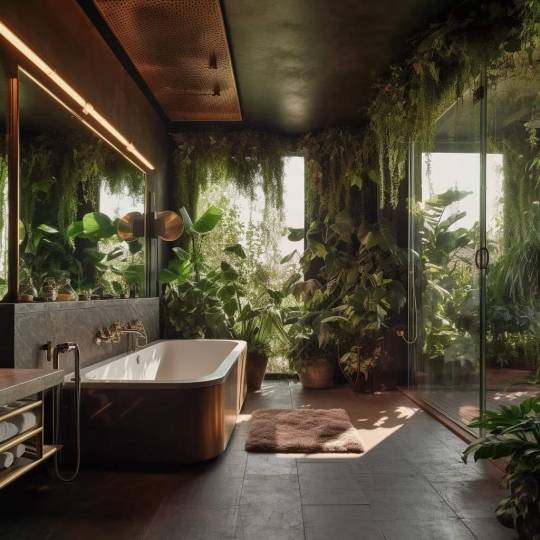

Designed & Visualized by Reverse Orientalism
#art#design#gardens#landscaping#indor garden#Vizualization#concept#singapore#luxurypad#luxuryhouses#spiral staircase#stairway#staircase#stairwell#luxuryhouse#luxuryhomes#pad#green#greenery#tropical#billionairelife
642 notes
·
View notes
Text
IBC Cap Market Size, Share, Trends, Growth and Competitive Analysis
"IBC Cap Market – Industry Trends and Forecast to 2028
Global IBC Cap Market, By Product Type (Flange, Plugs, Vent-in Plug, Vent-out Plug and Screw closure), Type (Plastic IBC, Metal IBC and Composite IBCs), Material Type (Plastics, Metal, Aluminium and Steel), End Use (Chemicals & Fertilizers, Petroleum & Lubricants, Paints, Inks & Dyes, Food & Beverage, Agriculture, Building & Construction, Healthcare & Pharmaceuticals and Mining), Application (Food And Drinks, Chemical Industry, Oil and Agriculture), Country (U.S., Canada, Mexico, Brazil, Argentina, Rest of South America, Germany, France, Italy, U.K., Belgium, Spain, Russia, Turkey, Netherlands, Switzerland, Rest of Europe, Japan, China, India, South Korea, Australia, Singapore, Malaysia, Thailand, Indonesia, Philippines, Rest of Asia-Pacific, U.A.E, Saudi Arabia, Egypt, South Africa, Israel, Rest of Middle East and Africa) Industry Trends and Forecast to 2028
Access Full 350 Pages PDF Report @
The global IBC cap market is expected to witness significant growth over the forecast period due to the increasing demand for intermediate bulk containers (IBCs) in various industries such as chemicals, food and beverages, pharmaceuticals, and others. The IBC caps play a crucial role in ensuring the safe storage and transportation of liquid products. The market growth is also being driven by technological advancements in IBC cap designs, such as tamper-evident seals and spouts for easy dispensing. Additionally, the growing focus on sustainability and recyclability of packaging materials is further boosting the adoption of IBC caps made from eco-friendly materials.
**Segments**
- Based on material type, the IBC cap market can be segmented into plastic, metal, and others. Plastic caps are widely used due to their lightweight nature and cost-effectiveness. - By cap type, the market can be categorized into screw caps, snap-on caps, and flip-top caps. Screw caps are preferred for their secure sealing properties. - On the basis of end-user industry, the market can be divided into chemicals, food and beverages, pharmaceuticals, and others. The chemicals segment is anticipated to hold a significant market share due to the widespread use of IBCs for storing chemical products.
**Market Players**
- TPS Industrial Srl - Schuetz GmbH & Co. KGaA - Mauser Packaging Solutions - Time Technoplast Ltd - Berry Global Inc. - THIELMANN UCON AG - Precision IBC, Inc. - Peninsula Packaging LLC
These market players are actively involved in strategic initiatives such as product launches, partnerships, and acquisitions to strengthen their market presence and expand their product offerings. The competitive landscape of the IBC cap market is characterized by intense competition, prompting companies to focus on innovation and quality to gain a competitive edge.
The Asia-Pacific region is expected to witness substantial growth in the IBC cap market, driven by the rapid industrialization and the increasing adoption of IBCsThe Asia-Pacific region represents a significant growth opportunity for the global IBC cap market due to several key factors. With rapid industrialization and the expanding manufacturing sector in countries like China, India, and Southeast Asia, there is a growing demand for efficient storage and transportation solutions, including IBCs and their associated caps. The increased focus on chemical production, food processing, and pharmaceutical manufacturing in the region further fuels the need for reliable packaging solutions like IBC caps. As these industries continue to grow, the adoption of IBC caps is expected to rise, driving market expansion in the Asia-Pacific region.
Moreover, the emphasis on enhancing safety standards and ensuring product integrity is a crucial factor contributing to the growth of the IBC cap market in Asia-Pacific. Regulations regarding the safe handling and transportation of hazardous chemicals and pharmaceuticals necessitate the use of high-quality caps that can effectively seal and protect the contents of IBCs. As companies in the region strive to comply with stringent regulatory requirements, the demand for advanced and secure IBC caps is projected to increase significantly.
Additionally, the shift towards sustainability and eco-friendly practices is another trend shaping the IBC cap market in Asia-Pacific. With growing environmental concerns and increasing awareness about plastic pollution, there is a rising preference for IBC caps made from recyclable and biodegradable materials. Market players in the region are focusing on developing sustainable packaging solutions to meet the evolving consumer demands and align with global sustainability goals. This shift towards eco-friendly IBC caps not only addresses environmental concerns but also presents market players with opportunities to differentiate their offerings and attract environmentally conscious customers.
Furthermore, the competitive landscape of the IBC cap market in Asia-Pacific is characterized by the presence of both local manufacturers and international players. Local companies often have a strong understanding of regional market dynamics and customer preferences, giving them a competitive advantage in catering to specific industry needs. On the other hand, multinational companies bring technological expertise and a wide product portfolio, which can appeal to a broader customer base seeking innovative and**Global IBC Cap Market, By Product Type**
- Flange - Plugs - Vent-in Plug - Vent-out Plug - Screw closure
**Type**
- Plastic IBC - Metal IBC - Composite IBCs
**Material Type**
- Plastics - Metal - Aluminium - Steel
**End Use**
- Chemicals & Fertilizers - Petroleum & Lubricants - Paints, Inks & Dyes - Food & Beverage - Agriculture - Building & Construction - Healthcare & Pharmaceuticals - Mining
**Application**
- Food And Drinks - Chemical Industry - Oil and Agriculture
The Global IBC Cap market is experiencing significant growth due to the rising demand for intermediate bulk containers across various industries. Plastic caps are increasingly preferred for their lightweight and cost-effective nature, driving market growth within the material type segment. Screw caps, known for their secure sealing properties, dominate the cap type category. The chemicals segment is anticipated to hold a substantial market share among end-user industries, attributed to the widespread use of IBCs for chemical storage. The market players in the industry are focusing on strategic initiatives like product launches and partnerships to enhance their market presence and offerings. The competitive landscape is intense, spurring companies to innovate and prioritize quality for a competitive advantage.
In Asia-Pacific, the IBC cap market is poised for robust growth fueled by rapid industrialization and the expanding manufacturing sector, particularly in countries like China,
Countries Studied:
North America (Argentina, Brazil, Canada, Chile, Colombia, Mexico, Peru, United States, Rest of Americas)
Europe (Austria, Belgium, Denmark, Finland, France, Germany, Italy, Netherlands, Norway, Poland, Russia, Spain, Sweden, Switzerland, United Kingdom, Rest of Europe)
Middle-East and Africa (Egypt, Israel, Qatar, Saudi Arabia, South Africa, United Arab Emirates, Rest of MEA)
Asia-Pacific (Australia, Bangladesh, China, India, Indonesia, Japan, Malaysia, Philippines, Singapore, South Korea, Sri Lanka, Thailand, Taiwan, Rest of Asia-Pacific)
Key Coverage in the IBC Cap Market Report:
Detailed analysis of IBC Cap Market by a thorough assessment of the technology, product type, application, and other key segments of the report
Qualitative and quantitative analysis of the market along with CAGR calculation for the forecast period
Investigative study of the market dynamics including drivers, opportunities, restraints, and limitations that can influence the market growth
Comprehensive analysis of the regions of the IBC Cap industry and their futuristic growth outlook
Competitive landscape benchmarking with key coverage of company profiles, product portfolio, and business expansion strategies
TABLE OF CONTENTS
Part 01: Executive Summary
Part 02: Scope of the Report
Part 03: Research Methodology
Part 04: Market Landscape
Part 05: Pipeline Analysis
Part 06: Market Sizing
Part 07: Five Forces Analysis
Part 08: Market Segmentation
Part 09: Customer Landscape
Part 10: Regional Landscape
Part 11: Decision Framework
Part 12: Drivers and Challenges
Part 13: Market Trends
Part 14: Vendor Landscape
Part 15: Vendor Analysis
Part 16: Appendix
Browse Trending Reports:
Calcium Glycinate Market Retinal Biologics Market Facial Fat Transfer Market Angio Suites Diagnostic Imaging Market Adoption Of Benelux Power Tools Market De Quervains Tenosynovitis Treatment Market Biodetectors And Accessories Market Colposcope Market Sports Medicine Market Automotive Adhesives Market Infrared Imaging Market Vapour Deposition Market Professional Diagnostics Market Ct Scanner Market Programmable Application Specific Integrated Circuit Asic Market Hospital Operating Room Or Products And Solutions Market Castor Oil Market Zika Virus Infection Drug Market Toluene Diisocynate Market Antibiotic Resistance Market
About Data Bridge Market Research:
Data Bridge set forth itself as an unconventional and neoteric Market research and consulting firm with unparalleled level of resilience and integrated approaches. We are determined to unearth the best market opportunities and foster efficient information for your business to thrive in the market. Data Bridge endeavors to provide appropriate solutions to the complex business challenges and initiates an effortless decision-making process.
Contact Us:
Data Bridge Market Research
US: +1 614 591 3140
UK: +44 845 154 9652
APAC : +653 1251 975
Email: [email protected]"
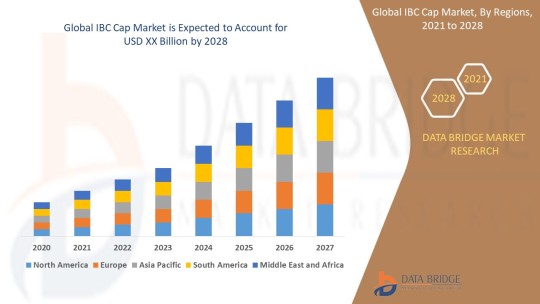
2 notes
·
View notes
Text
5 Common Mobile App Development Myths You Need to Stop Believing | Techgropse
In today's fast-paced digital landscape, mobile applications have become an integral part of our daily lives. Whether it's for social networking, productivity, or entertainment, mobile apps are ubiquitous. However, despite their prevalence, there are still many misconceptions surrounding mobile app development that can hinder the success of a project.
Developing A Mobile App Is Expensive And Time Consuming
One of the most widespread myths about mobile app development is that it's prohibitively expensive and time-consuming. While it's true that building a high-quality app requires investment, it doesn't have to break the bank. With advancements in technology and the availability of various development tools and platforms, the cost of app development has significantly decreased in recent years.
Additionally, there are several approaches to mobile app development Singapore, such as native, hybrid, and cross-platform development, each with its own set of pros and cons. By carefully considering your project requirements and budget constraints, you can choose the most cost-effective approach that meets your needs.

Building A Mobile App Guarantees Success
Another common misconception is that simply having a mobile app will guarantee success. While a well-designed and functional app is undoubtedly essential, it's just one piece of the puzzle. Success in the crowded app market requires more than just launching an app; it requires a comprehensive strategy encompassing marketing, user acquisition, retention, and monetization.
Furthermore, effective marketing and promotion are crucial for app success. Leveraging various channels such as app store optimization (ASO), social media, influencer marketing, and paid advertising can help increase app visibility and attract users.
Mobile App Development Is A One Time Effort
Some people mistakenly believe that a mobile app development company in Malaysia is a one-time effort—that once the app is launched, the work is done. However, the reality is that successful app development is an ongoing process that requires continuous updates, maintenance, and optimization.
Final Words :
Debunking these common myths about mobile app development is essential for ensuring the success of your app project. By understanding the realities of app development, leveraging the right tools and resources, and adopting a strategic approach, you can maximize your chances of creating a successful and impactful mobile app.
#app development#web application development#app developers#web app development#custom software development
2 notes
·
View notes